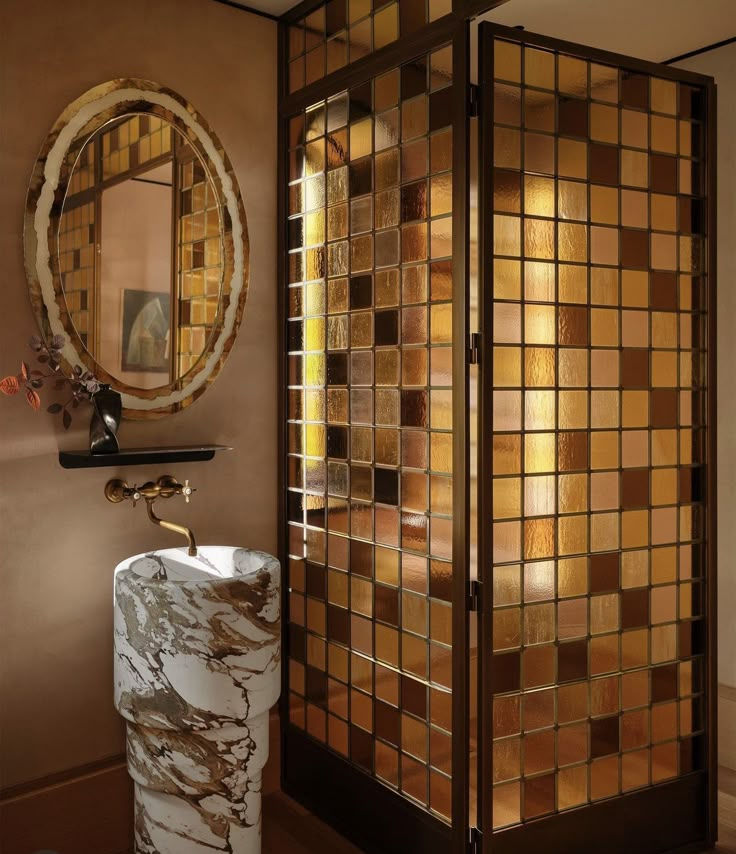The Enchanting World of Faux Stained Glass: 5 Beautiful Alternatives
- kodchaponhk
- Jun 10
- 4 min read
Updated: Jun 12
Stained glass has captivated our imagination for centuries with its luminous colors and intricate designs. While traditional stained glass requires specialized skills and tools, faux stained glass techniques offer accessible alternatives that can transform any space with similar visual impact. Let's explore the various types of faux stained glass and how you can incorporate them into your home or projects.
1.Painted Stained Glass
Painted faux stained glass involves using special glass paints or acrylics to create the appearance of stained glass on clear surfaces. This technique allows for incredible customization and creativity.
The process typically begins with creating an outline using a lead-like substance or special dimensional paint, followed by filling in the sections with translucent colors. When light passes through, the effect mimics traditional stained glass at a fraction of the cost and complexity.
Painted stained glass works wonderfully on windows, glass lampshades, vases, and even mirrors. The best part? If you make a mistake, you can often remove the paint and start again—something impossible with traditional stained glass!

2.Stained Glass Clings
Stained glass clings are vinyl or gel-based decorative elements that adhere to glass surfaces without adhesives. They work through static electricity or a special cling material that grips smooth surfaces.
These clings come in countless designs, from simple geometric patterns to elaborate scenes. They're incredibly user-friendly—simply clean your window, position the cling, and smooth out any air bubbles. When you want a change, they peel off without leaving residue.
Clings are perfect for renters or those who enjoy changing their decor seasonally. They're also a great option for bathrooms and kitchens where privacy is desired without sacrificing natural light.

3.Stained Glass Decals
Unlike clings, stained glass decals use adhesives to create a more permanent installation. They come in various designs and sizes and can be applied to glass, plastic, and other smooth surfaces.
The application process involves carefully positioning the decal, applying it to the surface, and removing the backing paper. Once applied, these decals can last for years while maintaining their vibrant colors and transparency.
Decals are ideal for long-term decorative elements on cabinet doors, sidelights, and transom windows. They're especially popular for front doors, where they can add privacy and visual interest to entryways.

4.Stained Glass Acrylic
Stained glass acrylic involves using colored acrylic sheets cut and assembled to resemble stained glass panels. This medium offers durability and versatility that glass cannot match.
Acrylic is lightweight, shatter-resistant, and can be cut with basic tools, making it accessible for DIY enthusiasts. The pieces can be joined using special solvent cements or mounted within frames to create stunning panels.
This approach works beautifully for hanging art pieces, room dividers, and outdoor applications where traditional glass might be impractical. The colors remain vibrant for years and don't require the extensive support structures that heavy glass demands.
5.Stained Glass Backlit Film
Perhaps the most modern approach to faux stained glass, backlit film combines digital printing technology with illumination to create dramatic stained glass effects.
These films feature high-resolution stained glass designs printed on translucent material. When installed on light boxes or backlit panels, they produce a luminous effect similar to sunlight streaming through traditional stained glass.
Backlit films are increasingly popular in commercial spaces, restaurants, and modern homes where traditional architectural elements wouldn't be practical. They're also being used creatively in ceiling features, elevator surrounds, and as dramatic room dividers.
Which Faux Stained Glass Is Right for Your Project?
Each faux stained glass technique offers distinct advantages:
For beginners: Start with clings—they're forgiving and require no special tools
For customization: Painted stained glass offers unlimited design possibilities
For durability: Acrylic provides longevity and impact resistance
For dramatic effect: Backlit film creates stunning illuminated features
For semi-permanent installations: Decals strike a balance between longevity and replaceability
Whether you're looking to add privacy to a bathroom window, create a feature wall in your living room, or simply bring a touch of color to your space, faux stained glass techniques provide accessible options that capture the magic of this ancient art form without requiring specialized skills or tools.
The beauty of faux stained glass lies not just in its visual appeal, but in how it transforms ordinary light into extraordinary experiences—painting your rooms with dancing colors and patterns that change throughout the day. Perhaps that's why, after centuries of admiring traditional stained glass in cathedrals and historic buildings, we continue to find new ways to bring its enchantment into our everyday spaces.
The allure of faux stained glass techniques is undeniable, offering accessibility and versatility to today's decorators and artists. Yet, there remains a profound truth that echoes through centuries of artistic tradition: all art is ultimately ephemeral, with some mediums fading faster than others. While painted surfaces may dull, clings and decals may yellow, acrylics may cloud, and backlit films may fade, traditional stained glass endures through generations with remarkable resilience. These authentic leaded glass creations—crafted through the ancient dance of cutting glass, wrapping edges in lead came, and soldering joints—have survived wars, weather, and centuries of changing tastes. They darken and patina with dignity, telling stories of their age while maintaining their fundamental integrity. Perhaps this explains why medieval stained glass windows still glow with vibrant colors nearly a millennium after their creation, while our modern alternatives require eventual replacement. In the end, there is something profoundly humbling about this reality: in a world of convenient alternatives and quick solutions, true stained glass stands as a testament to craftsmanship that transcends time—a reminder that some things of beauty cannot be hastened, simplified, or replicated without sacrifice.
Source : Yours for the making - Instructables




Comments